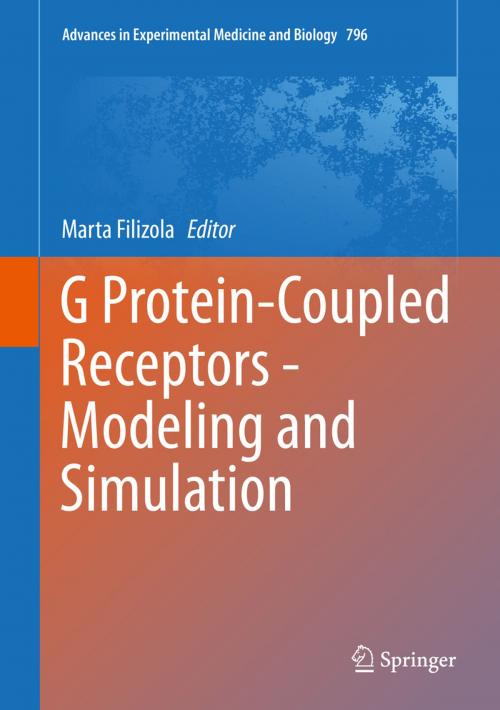G Protein-Coupled Receptors - Modeling and Simulation
Nonfiction, Health & Well Being, Medical, Medical Science, Genetics, Science & Nature, Science, Biological Sciences, Biochemistry| Author: | ISBN: | 9789400774230 | |
| Publisher: | Springer Netherlands | Publication: | October 25, 2013 |
| Imprint: | Springer | Language: | English |
| Author: | |
| ISBN: | 9789400774230 |
| Publisher: | Springer Netherlands |
| Publication: | October 25, 2013 |
| Imprint: | Springer |
| Language: | English |
G protein-coupled receptors (GPCRs) are heptahelical transmembrane receptors that convert extra-cellular stimuli into intra-cellular signaling, and ultimately into biological responses. Since GPCRs are natural targets for approximately 40% of all modern medicines, it is not surprising that they have been the subject of intense research. Notwithstanding the amount of data generated over the years, discovering ligands of these receptors with optimal therapeutic properties is not straightforward and has certainly been hampered for years by the lack of high-resolution structural information about these receptors. Luckily, there has been a steady increase of high-resolution crystal structures of these receptors since 2007, and this information, integrated with dynamic inferences from computational and experimental methods, holds great potential for the discovery of new, improved drugs. This book, which provides, for the first time, state-of-the-art views on modeling and simulation of GPCRs, is divided into 4 parts. In the first part, the impact of currently available GPCR crystal structures on structural modeling is discussed extensively as are critical insights from simulations in the second part of the book. The third part reports recent progress in rational ligand discovery and mathematical modeling, whereas the fourth part provides an overview of bioinformatics tools and resources that are available for GPCRs.
G protein-coupled receptors (GPCRs) are heptahelical transmembrane receptors that convert extra-cellular stimuli into intra-cellular signaling, and ultimately into biological responses. Since GPCRs are natural targets for approximately 40% of all modern medicines, it is not surprising that they have been the subject of intense research. Notwithstanding the amount of data generated over the years, discovering ligands of these receptors with optimal therapeutic properties is not straightforward and has certainly been hampered for years by the lack of high-resolution structural information about these receptors. Luckily, there has been a steady increase of high-resolution crystal structures of these receptors since 2007, and this information, integrated with dynamic inferences from computational and experimental methods, holds great potential for the discovery of new, improved drugs. This book, which provides, for the first time, state-of-the-art views on modeling and simulation of GPCRs, is divided into 4 parts. In the first part, the impact of currently available GPCR crystal structures on structural modeling is discussed extensively as are critical insights from simulations in the second part of the book. The third part reports recent progress in rational ligand discovery and mathematical modeling, whereas the fourth part provides an overview of bioinformatics tools and resources that are available for GPCRs.















